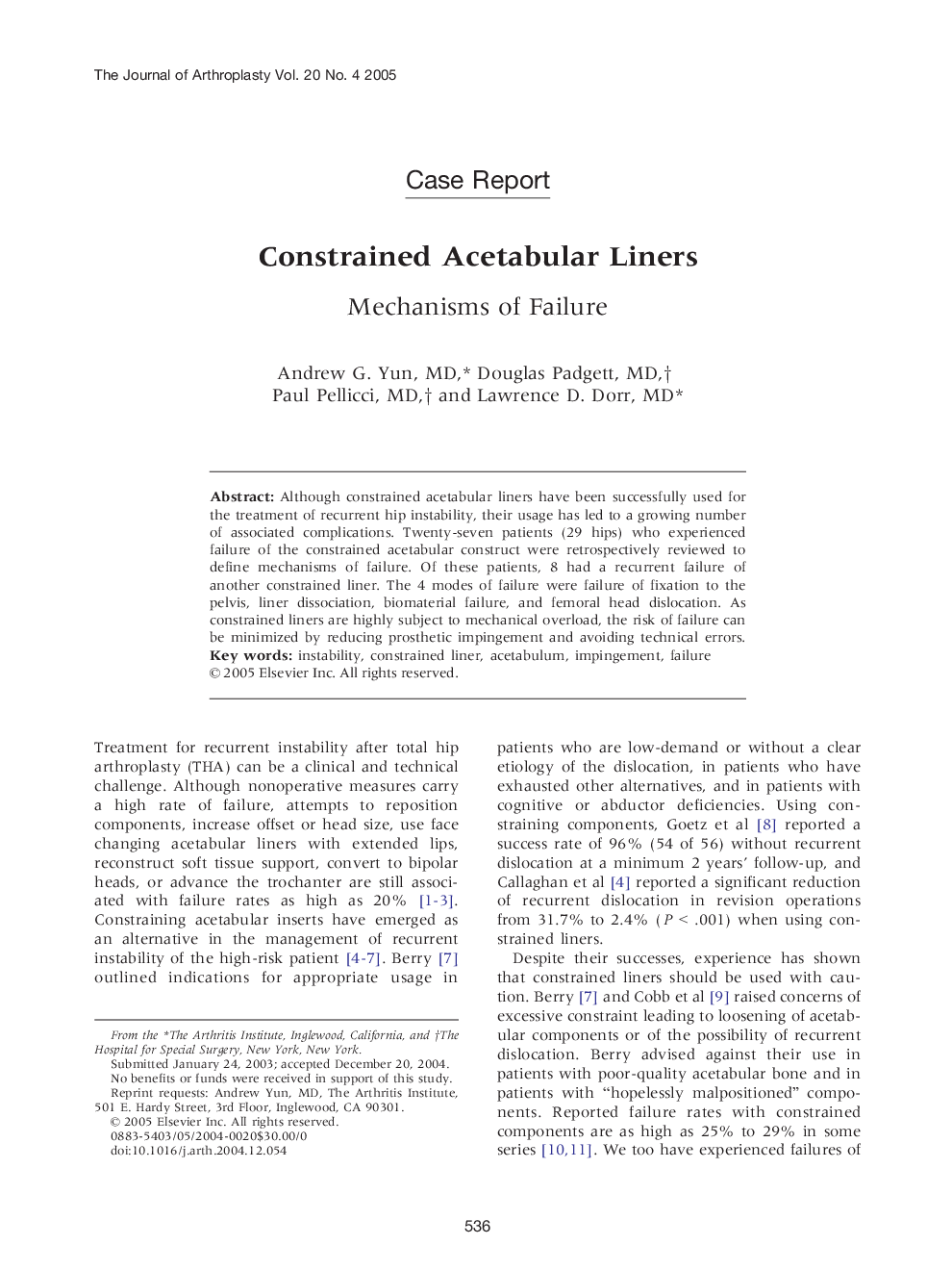| Article ID | Journal | Published Year | Pages | File Type |
|---|---|---|---|---|
| 10081767 | The Journal of Arthroplasty | 2005 | 6 Pages |
Abstract
Although constrained acetabular liners have been successfully used for the treatment of recurrent hip instability, their usage has led to a growing number of associated complications. Twenty-seven patients (29 hips) who experienced failure of the constrained acetabular construct were retrospectively reviewed to define mechanisms of failure. Of these patients, 8 had a recurrent failure of another constrained liner. The 4 modes of failure were failure of fixation to the pelvis, liner dissociation, biomaterial failure, and femoral head dislocation. As constrained liners are highly subject to mechanical overload, the risk of failure can be minimized by reducing prosthetic impingement and avoiding technical errors.
Related Topics
Health Sciences
Medicine and Dentistry
Orthopedics, Sports Medicine and Rehabilitation
Authors
Andrew G. MD, Douglas MD, Paul MD, Lawrence D. MD,
